ספרים
פרסומים פרי עטם של חברי סגל בית הספר ללימודי יסוד ביהדות:
-
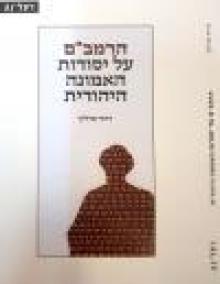
הרמב"ם על יסודות האמונה היהודית
תקצירהספר הנוכחי מבקש להציע הזדמנות להיטיב להכיר את רשימת שלושה-עשר יסודות האמונה של הרמב"ם ולהבין באופן מעמיק יותר את תכניה, כל זאת על ידי עיון שיטתי בטקסט עצמו – הקדמת הרמב"ם לפירושו על הפרק העשירי במסכת סנהדרין במשנה. רשימת שלושה-עשר יסודות האמונה (הידועים בכינוי י"ג העיקרים) היא מהתזות היותר מפורסמות בהגותו של הרמב"ם. ואולם פרסומה של רשימה זו נקנה לה לא מתוך דברי הרמב"ם עצמו אלא מעיבודים מאוחרים שלה ששובצו בסידורי התפילה, עיבודים שהרמב"ם לא כתבם ושאינם תואמים בהכרח את תוכני הרשימה המקורית שחיבר.
אומנם במרוצת הדורות נכתבו ספרים ומאמרים רבים – מחקריים, הגותיים ופרשניים – על רשימת היסודות של הרמב"ם, אבל טרם נכתב חיבור מודרני המתמקד בניתוח טקסטואלי בהיר וקריא של רשימה זו, מתוך גישה מחקרית מובהקת. זו מטרתו העיקרית של ספר זה. כמו כן, בין דפי הספר עולה הצעת קריאה חדשה לרשימת היסודות בכללותה, כלומר: לא מסמך דוגמטי המחייב בשלמותו ובאופן אחיד את כלל הציבור, אלא טקסט רב-ממדי המכוּון לקהלים מגוונים ואף מעביר לעיתים מסרים שונים בענייני האמונה היהודית לסוגי הקוראים השונים.
ספר זה פונה לכל מי שמגלה עניין תרבותי, דתי, פילוסופי או היסטורי בדמותו של הרמב"ם ובהגותו, בסוגיית יסודות האמונה היהודית ובשאלות מרכזיות בפילוסופיה של הדת. לאורך פרקי הספר יוצגו עמדותיו של הרמב"ם, בהיותן מקור השראה לחשיבה עיונית ודתית מעמיקה, לא מתוקף היותן מקור סמכות דתית בלתי מעורערת. הדיון בספר עשוי להיות נקודת מוצא לשיח אישי וחברתי בוגר, מודע, כן ורלוונטי על ערכן של אמונות בכלל ועל אמונות בדת היהודית בפרט.
2019, הוצאת רסלינג, 220 עמודים
-
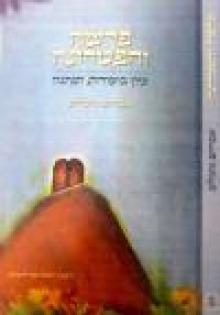
פרשה והפטרתה: עיון ביסודות הנהגה
תקצירפרקי התורה וההפטרה כוללים היבטי התנהגות הנמסרים לכל אחד מישראל ומהווים דפוסי חיים, של חיים טובים אשר על האדם לבחור לו, בזכות הבחירה בין הטוב והרע. היבטים אלה, כוללים מסרים, דרכי התנהגות, חשבון נפש ומוסר השכל, אשר נמצאים בטווח יכולתו של האדם.
מחקר זה, המושתת על פרשות התורה והפטרותיה, מהווה מעקב של היבטים חשובים אלה, היכולים להיות בסיס ויסוד להתנהגות חיובית של האדם, כדי שיעניק לו חיים טובים במהלך חייו. האדם בימי חלדו מחפש משמעות. באה התורה ונותנת לו את הדרך ליצירת הכלים ליישום המטרה, וההפטרה מהווה השלמה לכך.ספר זה, מהווה שילוב מאחד של נתונים, תוך חשיפתו של המעגל הרעיוני-ערכי של חוקי התורה שאודותם פועלים הנביאים תוך ניסיון ליישמם ולשרשם בעם ישראל עמו של ה', כמודל אידיאלי לדרכי התנהגות.
העיון הרב-תחומי האינטר-דיסציפלינארי שלפנינו, מוצג בבהירות רבה ומוסבר בהסבר השווה לכל נפש ופונה לכלל הציבור: לחוקרים, אנשי הוראה, הקהל המשכיל הרחב, ולכל מתעניין.2008, הוצאה לאור, ראובן מס, 247 עמודים
-
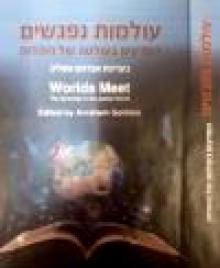
עולמות נפגשים - המדעים בעולמה של התורה: קובץ מאמרים בתחום התורה והמדע
תקצירספר זה הינו אסופת מאמרים ומבוסס על קורס רב-תחומי שניתן במסגרת ביה"ס ללימודי יסוד " עולמות נפגשים: המדעים בעולמה של היהדות". את הקורס הגה יזם ויצר בשנת תשס"ו ד"ר מאיר רפלד ז"ל בהיותו ראש המרכז ללימודי יסוד ביהדות וד"ר אברהם גוטליב הופקד על ניהול וריכוז הקורס.
הקורס פותח צוהר נרחב להבנת היחס המעניין והמרתק שבין שני התחומים: תורה ומדע. התורה שהיא התורה שבכתב בשילוב עם התורה שבעל-פה-הספרות התלמודית- המבארת אותה באופן מעשי-יישומי. התורה שבעל-פה בביאור חז"ל לתורה שבכתב מבררת את המציאות ההלכתית ועונה על השאלה "מה", ואילו המדע מברר את המציאות המדעית ועונה על השאלה "איך ולמה". מכאן מפגש העולמות השווים במטרתם: בירור המציאות. תכליתם שונה במהות המציאות: הלכתית או מדעית. וכיום בעידן הננו-טכנולוגיה, בשיא הפריחה והשגשוג של הקדמה והמודרניזציה, עשויה המציאות המדעית לשפוך אור ולסייע בהבנת המציאות ההלכתית הלכה למעשה.
2018, הוצאה לאור, ביה"ס ללימודי יסוד ביהדות, ע"ש הלנה ופאול שולמן, אוניברסיטת בר-אילן, רמת-גן, 378 עמודים
-
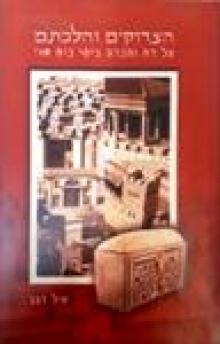
הצדוקים והלכתם - על דת וחברה בימי בית שני
תקצירהספר הוא מסע אל עולמם ההלכתי- דתי ותולדותיהם של הצדוקים. הצדוקים עמדו בראש החברה היהודית והנהיגו את בית המקדש בתקופה החשמונאית ובימי בית הורדוס, אך לא הותירו אחריהם כתבים משל עצמם. השתייכו אליהם השליטים החשמונאים יוחנן הורקנוס, אלכסנדר ינאי ובנו אריסטובלוס השני, וכן גם הכוהנים הגדולים יוסף קייפא (שעצר את ישו והסגירו לרומאים), חנן בן חנן (מראשי המנהיגים במרד הגדול, שגם הוציא להורג את יעקב אחי ישו), ועוד רבים. הם מייצגים במידה רבה את היהדות הקדומה, הטרום-רבנית.
הלכות הצדוקים כפי שהשתמרו בספרות חז"ל, מנותחות בספר זה תוך השוואתן עם ההלכות שבמגילות קומראן, כגון מגילת המקדש, ו'מקצת מעשי התורה'. תפיסת עולמם של הצדוקים, שהמחבר מגדיר אותה כ'קדושה דינמית', משוחזרת לאור מודלים אנתרופולוגיים. בהמשך הספר מתבררים תולדותיהם של הכוהנים הגדולים הצדוקים, ומידת השפעתם על הנעשה במדינה החשמונאית וההרודיאנית ועל הנעשה בבית המקדש, תוך ניתוח דברי ההיסטוריון יוסף בן מתתיהו. דיון מיוחד מוקדש לרדיפותיהם של הצדוקים את הנוצרים הראשונים כפי שהשתמרו בברית החדשה. בתוך כך, הספר אף דן בעולמם ההלכתי- חברתי ובתולדותיהם של יריביהם העיקריים של הצדוקים, הלא הם הפרושים, אבותיהם הרוחניים של חז"ל.
2005, הוצאת יד בן צבי, 457 עמודים
-
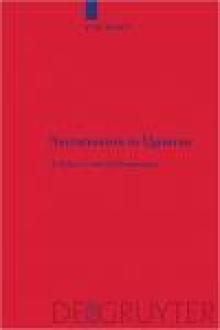
Sectarianism in Qumran: A Cross-Cultural Perspective
תקצירSectarianism in Qumran: A Cross-Cultural Perspective explores the sectarian characteristics of the system of beliefs and laws of the two major Qumran sects of the Dead Sea Scrolls, the yahad and the Damascus Covenant, using theories of sectarianism and related topics in sociology, anthropology and the study of religion. It discusses Qumranic moral and purity boundaries, cultic rituals, wealth, gender, atonement, revelation mysticism, structure and organization and compares them with those of seven sects of the same (introversionist) type: the early Anabaptists, Mennonites, Hutterites and Amish, Puritans, Quakers and Shakers. The sociological and historical relationship between the Qumran sects and the related movements of 1 Enoch, Jubilees and the Essenes are analyzed in detail, in order to understand the socio-religious background of sectarianism in Qumran and its subsequent variations. Throughout the chapters, differences between the yahad, the Damascus Covenant and the Essenes are observed in relation to social boundaries, social structure, gender relations, revelation and inclination towards mysticism. Points of resemblance and difference are traced between the Qumran sects and the early-modern Christian ones, and several different patterns of sectarian ideology and behavior are noticed among all these sects.
2007, De Gruyter, 438 Pages
-
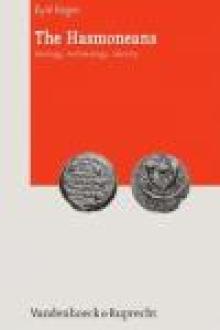
The Hasmoneans: Ideology, Archaeology, Identity
תקצירThe first two chapters discuss the religious practices of the Hasmoneans.
Chapter 1 explores why the Maccabees regarded Hanukkah as a festival of renewal, specifically of those traditions related to the Temple cult.
Chapter 2 examines the manner in which the Hasmoneans used the protection and maintenance of the Jewish Temple to legitimize their rule-and how they worked to place the Temple at the center of the Jewish religion.
Chapters 3-5 deal with different perspectives in the Hellenistic world on the role of government and royal ideologies. Specifically, chapter 3 explores both the Hellenistic and Jewish contexts for Hasmonean government and kingship. Regev shows how the Hasmonean dynasty built up its religious (in contrast to political) authority, suggesting that the Hasmonean state was not a conventionally Hellenistic one, but rather a 'national' monarchy, closer to Macedonian in type. Chapter 4 attempts to decipher the meaning of the symbols and epigraphs on Hasmonean coins, and examines how both Hellenistic symbols and Jewish concepts were employed to reinforce the dynasty's authority and introduce Jewish 'national' ideas into the populace. Chapter 5 then undertakes a comparative social-archaeological analysis of the Hasmonean palaces in Jericho in an effort to gain insight into their royal ideology. The author compares the Hasmonean palaces to other Hellenistic palaces - especially the Herodian palaces.
Finally, the concluding chapter integrates the previous findings into a new understanding of and appreciation for the Hasmoneans' creation of an innovative Jewish corporal identity, one whose echoes we can still hear today.2013, Vandenhoeck & Ruprecht, 340 Pages
-

The Temple in Early Christianity: Experiencing the Sacred
תקצירA comprehensive treatment of the early Christian approaches to the Temple and its role in shaping Jewish and Christian identity.
The first scholarly work to trace the Temple throughout the entire New Testament, this study examines Jewish and Christian attitudes toward the Temple in the first century and provides both Jews and Christians with a better understanding of their respective faiths and how they grow out of this ancient institution.
The centrality of the Temple in New Testament writing reveals the authors’ negotiations with the institutional and symbolic center of Judaism as they worked to form their own religion.2019, Yale University Press; 496 pages



